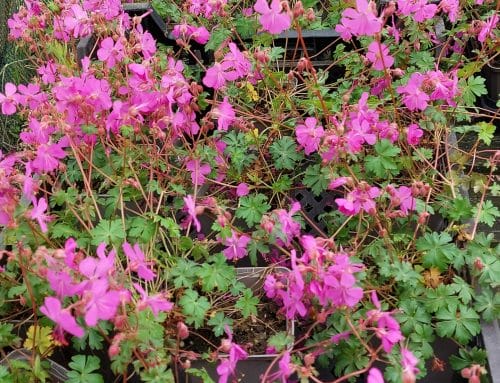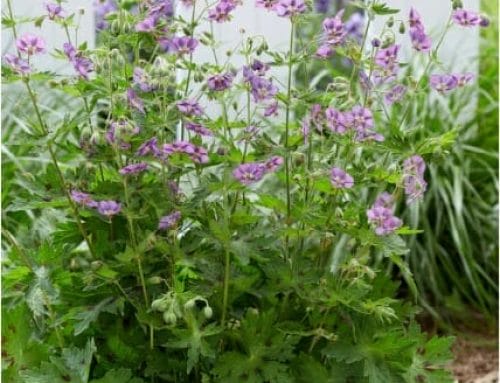Trailing geraniums are also often referred to as sprawling or scrambling due to their nature of sending out long prostrate stems that weave their way through other plants in the border. These stems produce both flowers and leaves and can have quite a far reach. I’ve frequently caught myself wondering why my sanguineum with its usually bright pink flowers now has a few pale blue ones and then remember the pale blue ones belong to another geranium that likes to creep and spread. These trailing stems do not bind themselves to other plants or strangle them in the way some creeping plants like Ivy or bind weed do. They just wend their merry way stretching their arms as far as they can. These forms of geraniums can be grown at the front of a border and left to scramble through your other plants, or you can grow them near a ledge where they will tumble over it. I have an amazing G. Salome at the nursery that spills over a couple of old railway sleepers and it looks wonderful when it gets going.
Usually these sorts of geraniums don’t have much of a crown or rhizome like those of the phaeum or x oxonianum species do, so they are often hard to propagate via division, which is the easiest way to make more plants. These types of geranium will often be propagated via root or basal cutting which can be tricky and take a while to create new plants. This usually results in the plant being more expensive and sometimes even being limited to Plant Breeders Rights for propagation.
The most common trailing species of geranium is the Wallichianum species, named for Nathaniel Wallich (pronounced Wallick) who was a Danish surgeon and botanist in the 18th and 19th Centuries. There are many different cultivars within the wallichianum species of geranium, here are a few:
- wallichianum ‘Havana Blues’
- wallichianum ‘Crystal Lake’
- wallichianum ‘Rise and Shine’
- wallichianum ‘Hexham Velvet’
There are other trailing varieties of geraniums such as G. ‘Light Dilys’ and G. ‘Dilys’ are both sanguineum species hybrids but have a more prostrate habit.




